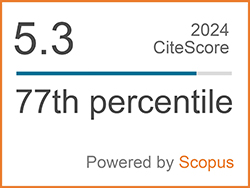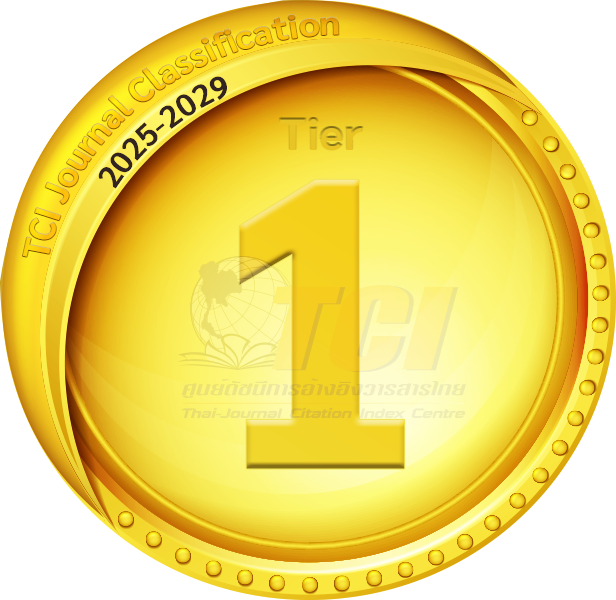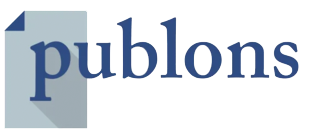Plasma-Activated Municipal Wastewater (PAMW): Revolutionizing Municipal Wastewater into High-Value Liquid Fertilizer for Duckweed Cultivation through Air Plasma Treatment
Abstract
Keywords
[1] S. A. Hussain, F. Razi, K. Hewage, and R. Sadiq, “The perspective of energy poverty and 1st energy crisis of green transition,” Energy, vol. 275, Jul. 2023, Art. no. 127487, doi: 10.1016/j.energy.2023.127487.
[2] J. Geng, S. U. Haq, J. Abbas, H. Ye, P. Shahbaz, A. Abbas, and Y. Cai, “Survival in pandemic times: Managing energy efficiency, food diversity, and sustainable practices of nutrient intake amid COVID-19 crisis,” Frontiers in Environmental Science, vol. 10, Jul. 2022, doi: 10.3389/fenvs.2022.945774.
[3] J. Iqbal, A. Javed, and M. A. Baig, “Growth and nutrient removal efficiency of duckweed (lemna minor) from synthetic and dumpsite leachate under artificial and natural conditions,” PLOS ONE, vol. 14, no. 8, Aug. 2019, Art. no. e0221755, doi: 10.1371/journal.pone.0221755.
[4] H. Ullah, B. Gul, H. Khan, and U. Zeb, “Effect of salt stress on proximate composition of duckweed (Lemna minor L.),” Heliyon, vol. 7, no. 6, Jun. 2021, Art. no. e07399, doi: 10.1016/j.heliyon.2021.e07399.
[5] L. Guo, J. Liu, Q. Wang, Y. Yang, Y. Yang, Q. Guo, H. Zhao, and W. Liu, “Evaluation of the Potential of Duckweed as a Human Food, Bioethanol Production Feedstock, and Antileukaemia Drug,” Journal of Food Biochemistry, vol. 2023, pp. 1–12, Mar. 2023, doi: 10.1155/2023/6065283.
[6] J. Xu, Y. Shen, Y. Zheng, G. Smith, X. S. Sun, D. Wang, Y. Zhao, W. Zhang, and Y. Li, “Duckweed (Lemnaceae) for potentially nutritious human food: A review,” Food Reviews International, vol. 39, no. 7, pp. 3620–3634, Aug. 2023, doi: 10.1080/87559129.2021.2012800.
[7] X. Zhao, G. K. Moates, A. Elliston, D. R. Wilson, M. J. Coleman, and K. W. Waldron, “Simultaneous saccharification and fermentation of steam exploded duckweed: Improvement of the ethanol yield by increasing yeast titre,” Bioresource Technology, vol. 194, pp. 263–269, Oct. 2015, doi: 10.1016/j.biortech.2015.06.131.
[8] M. Krzywonos, Z. Romanowska-Duda, P. Seruga, B. Messyasz, and S. Mec, “The use of plants from the lemnaceae family for biofuel production—A bibliometric and in-depth content analysis,” Energies, vol. 16, no. 4, Feb. 2023, Art. no. 2058, doi: 10.3390/en16042058.
[9] X. Ge, N. Zhang, G. C. Phillips, and J. Xu, “Growing Lemna minor in agricultural wastewater and converting the duckweed biomass to ethanol,” Bioresource Technology, vol. 124, pp. 485–488, Nov. 2012, doi: 10.1016/j.biortech.2012.08.050.
[10] D. Yadav, L. Barbora, D. Bora, S. Mitra, L. Rangan, and P. Mahanta, “An assessment of duckweed as a potential lignocellulosic feedstock for biogas production,” International Biodeterioration & Biodegradation, vol. 119, pp. 253–259, Apr. 2017, doi: 10.1016/j.ibiod.2016.09.007.
[11] Y. Gao, K. Francis, and X. Zhang, “Review on formation of cold plasma activated water (PAW) and the applications in food and agriculture,” Food Research International, vol. 157, Jul. 2022, Art. no. 111246, doi: 10.1016/j.foodres.2022.111246.
[12] A. Kumar, N. Škoro, W. Gernjak, and N. Puač, “Cold atmospheric plasma technology for removal of organic micropollutants from wastewater—A review,” The European Physical Journal D, vol. 75, no. 11, Nov. 2021, Art. no. 283, doi: 10.1140/epjd/s10053-021-00283-5.
[13] R. Zhou, R. Zhou, P. Wang, Y. Xian, A. Mai-Prochnow, X. Lu, P. J. Cullen, K. (Ken) Ostrikov, and K. Bazaka, “Plasma-activated water: Generation, origin of reactive species and biological applications,” Journal of Physics D: Applied Physics, vol. 53, no. 30, Jul. 2020, Art. no. 303001, doi: 10.1088/1361-6463/ab81cf.
[14] A. Barjasteh, Z. Dehghani, P. Lamichhane, N. Kaushik, E. H. Choi, and N. K. Kaushik, “Recent progress in applications of non-thermal plasma for water purification, bio-sterilization, and decontamination,” Applied Sciences, vol. 11, no. 8, Apr. 2021, Art. no. 3372, doi: 10.3390/app11083372.
[15] K. Matra, W. Aryuwong, W. Meetang, S. Ruthairat, C. Dechthummarong, W. Sangwang, and V. Luang-In, “Application of electrical breakdown in liquid process on inulin structural transformations,” IEEE Access, vol. 11, pp. 114777–114789, 2023, doi: 10.1109/ACCESS.2023.3321339.
[16] P. Poramapijitwat, P. Thana, P. Sukum, Y. Liangdeng, C. Kuensaen, and D. Boonyawan, “Selective cytotoxicity of lung cancer cells—A549 and H1299—Induced by Ringer’s lactate solution activated by a non-thermal air plasma jet device, Nightingale®,” Plasma Chemistry and Plasma Processing, vol. 43, no. 4, pp. 805–830, Jul. 2023, doi: 10.1007/s11090-023-10330-1.
[17] P. Poramapijitwat, P. Thana, D. Boonyawan, K. Janpong, C. Kuensaen, W. Charerntantanakul, L. D. Yu, and S. Sarapirom, “Effect of dielectric barrier discharge plasma jet on bactericidal and human dermal fibroblasts adult cells: In vitro contaminated wound healing model,” Surface and Coatings Technology, vol. 402, Nov. 2020, Art. no. 126482, doi: 10.1016/j.surfcoat.2020.126482.
[18] K. Matra and S. Tawkaew, “Decolorization of methylene blue in an ar non-thermal plasma reactor,” Journal of Engineering Science and Technology Review, vol. 13, no. 1, pp. 114–119, Feb. 2020, doi: 10.25103/jestr.131.15.
[19] S. A. A. Balkhi, S. M. Allabakshi, P. S. N. S. R. Srikar, S. Gomosta, R. K. Gangwar, and S. M. Maliyekkal, “Unwinding the correlation between atmospheric pressure plasma jet operating parameters and variation in antibiotic wastewater characteristics,” Journal of Water Process Engineering, vol. 60, Apr. 2024, Art. no. 105186, doi: 10.1016/j.jwpe.2024.105186.
[20] S.-A. Yehia, N. Petrea, N. Grigoriu, S. Vizireanu, M. E. Zarif, L.G. Carpen, R.-E. Ginghina, and G. Dinescu, “Organophosphorus toxic compounds degradation in aqueous solutions using single filament dielectric barrier discharge plasma jet source,” Journal of Water Process Engineering, vol. 46, Apr. 2022, Art. no. 102637, doi: 10.1016/j.jwpe.2022.102637.
[21] X. Hu, J. Feng, T. Ding, and R. Lv, “Correlation analysis of reactive oxygen and nitrogen species (RONS) components in plasma activated water (PAW) and its inactivation of Bacillus cereus endospore,” Journal of Water Process Engineering, vol. 56, Dec. 2023, Art. no. 104332, doi: 10.1016/j.jwpe.2023.104332.
[22] Z. Xu, Y. Tang, S. Hu, Y. Lan, W. Xi, W. Han, D. Wu, F. Yang, and C. Cheng, “Inactivation of Staphylococcus aureus in water by dielectric barrier discharge plasma jet: The role of inorganic ions, organic matter, and turbidity,” Journal of Water Process Engineering, vol. 56, Dec. 2023, Art. no. 104449, doi: 10.1016/j.jwpe.2023.104449.
[23] M. Zver, D. Dobnik, R. Zaplotnik, M. Mozetič, A. Filipić, and G. Primc, “Non-thermal plasma inactivation of viruses in water solutions,” Journal of Water Process Engineering, vol. 53, Jul. 2023, Art. no. 103839, doi: 10.1016/j.jwpe.2023.103839.
[24] R. P. Joshi and S. M. Thagard, “Streamer-like electrical discharges in water: Part II. environmental applications,” Plasma Chemistry and Plasma Processing, vol. 33, no. 1, pp. 17–49, Feb. 2013, doi: 10.1007/s11090-013-9436-x.
[25] A. Yusuf, H.K. Amusa, J.O. Eniola, A. Giwa, O. Pikuda, A. Dindi, and M. R. Bilad, “Hazardous and emerging contaminants removal from water by plasma-based treatment: A review of recent advances,” Chemical Engineering Journal Advances, vol. 14, May 2023, Art. no. 100443, doi: 10.1016/j.ceja.2023.100443.
[26] D. Boonyawan, K. Lamasai, C. Umongno, S. Rattanatabtimtong, L. D. Yu, C. Kuensaen, J. Maitip, and P. Thana, “Surface dielectric barrier discharge plasma–treated pork cut parts: Bactericidal efficacy and physiochemical characteristics,” Heliyon, vol. 8, no. 10, Oct. 2022, Art. no. e10915, doi: 10.1016/j.heliyon.2022.e10915.
[27] M. Pirsaheb and N. Moradi, “Sonochemical degradation of pesticides in aqueous solution: Investigation on the influence of operating parameters and degradation pathway – A systematic review,” RSC Advances, vol. 10, no. 13, pp. 7396–7423, 2020, doi: 10.1039/C9RA11025A.
[28] E. M. Cuerda-Correa, M. F. Alexandre-Franco, and C. Fernández-González, “Advanced oxidation processes for the removal of antibiotics from water. An overview,” Water, vol. 12, no. 1, Dec. 2019, Art. no. 102, doi: 10.3390/w12010102.
[29] P. Gururani, P. Bhatnagar, B. Bisht, V. Kumar, N. C. Joshi, M. S. Tomar, and B. Pathak, “Cold plasma technology: Advanced and sustainable approach for wastewater treatment,” Environmental Science and Pollution Research, vol. 28, no. 46, pp. 65062–65082, Dec. 2021, doi: 10.1007/s11356-021-16741-x.
[30] S. Kesar and M. S. Bhatti, “Chlorination of secondary treated wastewater with sodium hypochlorite (NaOCl): An effective single alternate to other disinfectants,” Heliyon, vol. 8, no. 11, Nov. 2022, Art. no. e11162, doi: 10.1016/j.heliyon.2022.e11162.
[31] I. Zerva, N. Remmas, I. Kagalou, P. Melidis, M. Ariantsi, G. Sylaios, and S. Ntougias, “Effect of chlorination on microbiological quality of effluent of a full-scale wastewater treatment plant,” Life, vol. 11, no. 1, Jan. 2021, Art. no. 68, doi: 10.3390/life11010068.
[32] S. Theepharaksapan, Y. Lerkmahalikhit, P. Suwannapech, P. Boonnong, M. Limawatchanakarn, and K. Matra, “Impact of multi-air plasma jets on nitrogen concentration variance in effluent of membrane bioreactor pilot-plant,” Engineering and Applied Science Research, vol. 48, no. 6, pp. 732–739, 2021, doi: 10.14456/easr.2021.75.
[33] N. N. K. Kaushik, B. Ghimire, Y. Li, M. Adhikari, M. Veerana, N. N. K. Kaushik, N. Jha, B. Adhikari, S.-J. Lee, K. Masur, T. von Woedtke, K.-D. Weltmann, and E. H. Choi, “Biological and medical applications of plasma-activated media, water and solutions,” Biological Chemistry, vol. 400, no. 1, pp. 39–62, Dec. 2018, doi: 10.1515/hsz-2018-0226.
[34] S. Theepharaksapan, K. Matra, P. Thana, T. Traiporm, W. Aryuwong, Y. Tanakaran, Y. Lerkmahalikhit, L. Malun, and S. Ittisupornrat, “The potential of plasma-activated water as a liquid nitrogen fertilizer for microalgae cultivation,” IEEE Transactions on Plasma Science, pp. 1–11, 2024, doi: 10.1109/TPS.2024.3362629.
[35] S. Chuea-uan, D. Boonyawan, C. Sawangrat, and S. Thanapornpoonpong, “Using plasma-activated water generated by an air gliding arc as a nitrogen source for rice seed germination,” Agronomy, vol. 14, no. 1, Dec. 2023, Art. no. 15, doi: 10.3390/agronomy14010015.
[36] P. Lamichhane, R. Paneru, L. N. Nguyen, J. S. Lim, P. Bhartiya, B. C. Adhikari, S. Mumtaz, and E. H. Choi, “Plasma-assisted nitrogen fixation in water with various metals,” Reaction Chemistry & Engineering, vol. 5, no. 11, pp. 2053–2057, 2020, doi: 10.1039/D0RE00248H.
[37] N. Saksono, Harianingsih, B. Farawan, V. Luvita, and Z. Zakaria, “Reaction pathway of nitrate and ammonia formation in the plasma electrolysis process with nitrogen and oxygen gas injection,” Journal of Applied Electrochemistry, vol. 53, no. 6, pp. 1183–1191, Jun. 2023, doi: 10.1007/s10800-023-01849-4.
[38] H. Chen, D. Yuan, A. Wu, X. Lin, and X. Li, “Review of low-temperature plasma nitrogen fixation technology,” Waste Disposal & Sustainable Energy, vol. 3, no. 3, pp. 201–217, Sep. 2021, doi: 10.1007/s42768-021-00074-z.
[39] N. Sarigul, F. Korkmaz, and İ. Kurultak, “A new artificial urine protocol to better imitate human urine,” Scientific Reports, vol. 9, no. 1, Dec. 2019, Art. no. 20159, doi: 10.1038/s41598-019-56693-4.
[40] M. Qadir, P. Drechsel, B. J. Cisneros, Y. Kim, A. Pramanik, P. Mehta, and O. Olaniyan, “Global and regional potential of wastewater as a water, nutrient and energy source,” Natural Resources Forum, vol. 44, no. 1, pp. 40–51, Feb. 2020, doi: 10.1111/1477-8947.12187.
[41] Y. Li, H. Li, X. Xu, S. Xiao, S. Wang, and S. Xu, “Fate of nitrogen in subsurface infiltration system for treating secondary effluent,” Water Science and Engineering, vol. 10, no. 3, pp. 217–224, Jul. 2017, doi: 10.1016/j.wse.2017.10.002.
[42] J. Li, Q. Zhou, and L. C. Campos, “Removal of selected emerging PPCP compounds using greater duckweed (Spirodela polyrhiza) based lab-scale free water constructed wetland,” Water Research, vol. 126, pp. 252–261, Dec. 2017, doi: 10.1016/j.watres.2017.09.002.
[43] S. Nakao, T. Nishio, and Y. Kanjo, “Simultaneous recovery of phosphorus and potassium as magnesium potassium phosphate from synthetic sewage sludge effluent,” Environmental Technology, vol. 38, no. 19, pp. 2416–2426, Oct. 2017, doi: 10.1080/09593330.2016.1264485.
[44] P. J. Bruggeman, M. J. Kushner, B. R. Locke, J. G. E. Gardeniers, W. G. Graham, D. B. Graves, R. C. H. M. Hofman-Caris, D. Maric, J. P. Reid, E. Ceriani, D. F. Rivas, J. E. Foster, S. C. Garrick, Y. Gorbanev, S. Hamaguchi, F. Iza, H. Jablonowski, E. Klimova, J. Kolb, F. Krcma, P. Lukes, Z. Machala, I. Marinov, D. Mariotti, S. M. Thagard, D. Minakata, E. C. Neyts, J. Pawlat, Z. L. Petrovic, R. Pflieger, S. Reuter, D. C. Schram, S. Schröter, M. Shiraiwa, B. Tarabová, P. A. Tsai, J. R. R. Verlet, T. von Woedtke, K. R. Wilson, K. Yasui, and G. Zvereva, “Plasma–liquid interactions: A review and roadmap,” Plasma Sources Science and Technology, vol. 25, no. 5, Sep. 2016, Art. no. 053002, doi: 10.1088/0963-0252/25/5/053002.
[45] K. Kosumsupamala, P. Thana, N. Palee, K. Lamasai, C. Kuensaen, A. Ngamjarurojana, P. Yangkhamman, and D. Boonyawan, “Air to H2-N2 pulse plasma jet for in-vitro plant tissue culture process: Source characteristics,” Plasma Chemistry and Plasma Processing, vol. 42, no. 3, pp. 535–559, May 2022, doi: 10.1007/s11090-022-10228-4.
[46] A. D. Eaton, L. S. Clesceri, E. W. Rice, and A. E. Greenberg, Standard Methods for the Examination of Water & Wastewater, 21st ed. Washington DC: American Public Health Association, 2005.
[47] M. I. Fauth and A. C. Richardson, “Spectrophotometric determination of nitrogen dioxide in nitroglycerin,” Microchemical Journal, vol. 12, no. 4, pp. 534–541, Dec. 1967, doi: 10.1016/0026-265X(67)90091-4.
[48] D. A. Cataldo, M. Maroon, L. E. Schrader, and V. L. Youngs, “Rapid colorimetric determination of nitrate in plant tissue by nitration of salicylic acid,” Communications in Soil Science and Plant Analysis, vol. 6, no. 1, pp. 71–80, Jan. 1975, doi: 10.1080/00103627509366547.
[49] T. G. Towns, “Determination of aqueous phosphate by ascorbic acid reduction of phosphomolybdic acid,” Analytical Chemistry, vol. 58, no. 1, pp. 223–229, Jan. 1986, doi: 10.1021/ac00292a054.
[50] L. Zhou and C. E. Boyd, “Comparison of Nessler, phenate, salicylate and ion selective electrode procedures for determination of total ammonia nitrogen in aquaculture,” Aquaculture, vol. 450, pp. 187–193, Jan. 2016, doi: 10.1016/j.aquaculture.2015.07.022.
[51] P. Kundu, K. Anitha, and R. Niravath, “Feeding impact of the vegetable mite, tetranychus neocaledonicus andré (Acari: Tetranychidae) on mentha rotundifolia L.,” International Journal of Recent Scientific Research, vol. 7, no. 4, pp. 10406–10409, 2016.
[52] AOAC, Official Method of Analysis: Association of Analytical Chemists, 19th ed. Washington DC: Association of Analytical Chemists, 2012, pp. 121–130.
[53] K. Matra, H. Furuta, and A. Hatta, “Current-voltage characteristics of DC discharge in micro gas jet injected into vacuum environment,” Journal of Physics: Conference Series, vol. 441, 2013, Art. no. 012021, doi: 10.1088/1742-6596/441/1/012021.
[54] K. Matra, “DC non-thermal atmospheric-pressure plasma jet generated using a syringe needle electrode,” Japanese Journal of Applied Physics, vol. 55, no. 7, 2016, doi: 10.7567/JJAP.55.07LB02.
[55] P. Lu, D. Boehm, P. Bourke, and P. J. Cullen, “Achieving reactive species specificity within plasma‐activated water through selective generation using air spark and glow discharges,” Plasma Processes and Polymers, vol. 14, no. 8, Aug. 2017, doi: 10.1002/ppap.201600207.
[56] V. A. Shakhatov and Yu. A. Lebedev, “Radiation spectroscopy in the study of the influence of a helium-nitrogen mixture composition on parameters of DC glow discharge and microwave discharge,” High Temperature, vol. 50, no. 5, pp. 658–681, Sep. 2012, doi: 10.1134/S0018151X12050173.
[57] P. Thana, A. Wijaikhum, P. Poramapijitwat, C. Kuensaen, J. Meerak, A. Ngamjarurojana, S. Sarapirom, and D. Boonyawan, “A compact pulse-modulation cold air plasma jet for the inactivation of chronic wound bacteria: development and characterization,” Heliyon, vol. 5, no. 9, Sep. 2019, Art. no. e02455, doi: 10.1016/j.heliyon.2019.e02455.
[58] J. Voráč, L. Kusýn, and P. Synek, “Deducing rotational quantum-state distributions from overlapping molecular spectra,” Review of Scientific Instruments, vol. 90, no. 12, Dec. 2019, doi: 10.1063/1.5128455.
[59] Q. Xiong, A. Y. Nikiforov, L. Li, P. Vanraes, N. Britun, R. Snyders, X. P. Lu, and C. Leys, “Absolute OH density determination by laser induced fluorescence spectroscopy in an atmospheric pressure RF plasma jet,” The European Physical Journal D, vol. 66, no. 11, Nov. 2012, Art. no. 281, doi: 10.1140/epjd/e2012-30474-8.
[60] M. Mavadat, A. Ricard, C. Sarra-Bournet, and G. Laroche, “Determination of ro-vibrational excitations of N2 (B, v′) and N2 (C, v′) states in N2 microwave discharges using visible and IR spectroscopy,” Journal of Physics D: Applied Physics, vol. 44, no. 15, Apr. 2011, Art. no. 155207, doi: 10.1088/0022-3727/44/15/155207.
[61] G. Cicala, E. D. Tommaso, A. C. Rainò, Y. A. Lebedev, and V. A. Shakhatov, “Study of positive column of glow discharge in nitrogen by optical emission spectroscopy and numerical simulation,” Plasma Sources Science and Technology, vol. 18, no. 2, May 2009, Art. no. 025032, doi: 10.1088/0963-0252/18/2/025032.
[62] T. Tian, H. Rabat, M. Magureanu, O. Aubry, and D. Hong, “Electrical investigation of a pin-to-plane dielectric barrier discharge in contact with water,” Journal of Applied Physics, vol. 130, no. 11, Sep. 2021, doi: 10.1063/5.0056654.
[63] S. B. Lyon, “Corrosion of Tungsten and its Alloys,” in Shreir’s Corrosion, Amsterdam, Netherlands: Elsevier, 2010, pp. 2151–2156, doi: 10.1016/B978-044452787-5.00105-0.
[64] Z. Liu, J. C. Yang, J. Cao, and Y. Li, “Development and application of tungsten electrode materials,” Materials Science Forum, vol. 817, pp. 348–354, Apr. 2015, doi: 10.4028/www.scientific.net/MSF.817.348.
[65] F. Tochikubo, Y. Shimokawa, N. Shirai, and S. Uchida, “Chemical reactions in liquid induced by atmospheric-pressure dc glow discharge in contact with liquid,” Japanese Journal of Applied Physics, vol. 53, no. 12, Dec. 2014, Art. no. 126201, doi: 10.7567/JJAP.53.126201.
[66] P. Bruggeman and C. Leys, “Non-thermal plasmas in and in contact with liquids,” Journal of Physics D: Applied Physics, vol. 42, no. 5, Mar. 2009, Art. no. 053001, doi: 10.1088/0022-3727/42/5/053001.
[67] J. Liu, B. He, Q. Chen, J. Li, Q. Xiong, G. Yue, X. Zhang, S. Yang, H. Liu, and Q. H. Liu, “Direct synthesis of hydrogen peroxide from plasma-water interactions,” Scientific Reports, vol. 6, no. 1, Dec. 2016, Art. no. 38454, doi: 10.1038/srep38454.
[68] Z. Machala, B. Tarabová, D. Sersenová, M. Janda, and K. Hensel, “Chemical and antibacterial effects of plasma activated water: correlation with gaseous and aqueous reactive oxygen and nitrogen species, plasma sources and air flow conditions,” Journal of Physics D: Applied Physics, vol. 52, no. 3, Jan. 2019, Art. no. 034002, doi: 10.1088/1361-6463/aae807.
[69] P. Heirman, W. V. Boxem, and A. Bogaerts, “Reactivity and stability of plasma-generated oxygen and nitrogen species in buffered water solution: a computational study,” Physical Chemistry Chemical Physics, vol. 21, no. 24, pp. 12881–12894, 2019, doi: 10.1039/C9CP00647H.
[70] F. Rezaei, P. Vanraes, A. Nikiforov, R. Morent, and N. De Geyter, “Applications of plasma-liquid systems: A review,” Materials, vol. 12, no. 17, Aug. 2019, Art. no. 2751, doi: 10.3390/ma12172751.
[71] N. Bolouki, W.-H. Kuan, Y.-Y. Huang, and J.-H. Hsieh, “Characterizations of a Plasma-Water System Generated by Repetitive Microsecond Pulsed Discharge with Air, Nitrogen, Oxygen, and Argon Gases Species,” Applied Sciences, vol. 11, no. 13, Jul. 2021, Art. no. 6158, doi: 10.3390/app11136158.
[72] P. Lu, D. Boehm, P. Bourke, and P. J. Cullen, “Achieving reactive species specificity within plasma‐activated water through selective generation using air spark and glow discharges,” Plasma Processes and Polymers, vol. 14, no. 8, Aug. 2017, doi: 10.1002/ppap.201600207.
[73] H. Jablonowski, A. Schmidt-Bleker, K.-D. Weltmann, T. von Woedtke, and K. Wende, “Non-touching plasma–liquid interaction – where is aqueous nitric oxide generated?,” Physical Chemistry Chemical Physics, vol. 20, no. 39, pp. 25387–25398, 2018, doi: 10.1039/C8CP02412J.
[74] H. Chen, D. Yuan, A. Wu, X. Lin, and X. Li, “Review of low-temperature plasma nitrogen fixation technology,” Waste Disposal & Sustainable Energy, vol. 3, no. 3, pp. 201–217, Sep. 2021, doi: 10.1007/s42768-021-00074-z.
[75] P. Peng, P. Chen, M. Addy, Y. Cheng, Y. Zhang, E. Anderson, N. Zhou, C. Schiappacasse, R. Hatzenbeller, L. Fan, S. Liu, D. Chen, J. Liu, Y. Liu, and R. Ruan, “In situ plasma-assisted atmospheric nitrogen fixation using water and spray-type jet plasma,” Chemical Communications, vol. 54, no. 23, pp. 2886–2889, 2018, doi: 10.1039/C8CC00697K.
[76] F. Judée, S. Simon, C. Bailly, and T. Dufour, “Plasma-activation of tap water using DBD for agronomy applications: Identification and quantification of long lifetime chemical species and production/consumption mechanisms,” Water Research, vol. 133, pp. 47–59, Apr. 2018, doi: 10.1016/j.watres.2017.12.035.
[77] M. Ksibi, “Chemical oxidation with hydrogen peroxide for domestic wastewater treatment,” Chemical Engineering Journal, vol. 119, no. 2–3, pp. 161–165, Jun. 2006, doi: 10.1016/j.cej.2006.03.022.
[78] S. Theepharaksapan and K. Matra, “Atmospheric argon plasma jet for post-treatment of Biotreated Landfill Leachate,” in iEECON 2018 - 6th International Electrical Engineering Congress, 2018, doi: 10.1109/IEECON.2018.8712320.
[79] H. Gulyas, R. von Bismarck, and L. Hemmerling, “Treatment of industrial wastewaters with ozone/hydrogen peroxide,” Water Science and Technology, vol. 32, no. 7, pp. 127–134, 1995, doi: 10.1016/0273-1223(96)00056-X.
[80] S. Horikoshi and N. Serpone, “In-liquid plasma: A novel tool in the fabrication of nanomaterials and in the treatment of wastewaters,” RSC Advances, vol. 7, no. 75, pp. 47196–47218, 2017, doi: 10.1039/c7ra09600c.
[81] Y. Deng and R. Zhao, “Advanced oxidation processes (AOPs) in wastewater treatment,” Current Pollution Reports, vol. 1, pp. 167–176, Sep. 2015, doi: 10.1007/s40726-015-0015-z.
[82] N. Cedergreen and T. V. Madsen, “Nitrogen uptake by the floating macrophyte Lemna minor,” New Phytologist, vol. 155, no. 2, pp. 285–292, Aug. 2002, doi: 10.1046/j.1469-8137.2002.00463.x.
[83] N. J. Langenfeld, P. Kusuma, T. Wallentine, C. S. Criddle, L. C. Seefeldt, and B. Bugbee, “Optimizing nitrogen fixation and recycling for food production in regenerative life support systems,” Frontiers in Astronomy and Space Sciences, vol. 8, Jun. 2021, doi: 10.3389/fspas.2021.699688.
[84] M. A. Hossain, S. Bhattacharjee, S.-M. Armin, P. Qian, W. Xin, H.-Y. Li, D.J. Burritt, M. Fujita, and L.-S. P. Tran, “Hydrogen peroxide priming modulates abiotic oxidative stress tolerance: insights from ROS detoxification and scavenging,” Frontiers in Plant Science, vol. 6, Jun. 2015, doi: 10.3389/fpls.2015.00420.
[85] V. Stoleru, R. Burlica, G. Mihalache, D. Dirlau, S. Padureanu, G. C. Teliban, D. Astanei, A. Cojocaru, O. Beniuga, and A. Patras, “Plant growth promotion effect of plasma activated water on Lactuca sativa L. cultivated in two different volumes of substrate,” Scientific Reports, vol. 10, no. 1, Dec. 2020, Art. no. 20920, doi: 10.1038/s41598-020-77355-w.
[86] W. Li, C. H. Luna-Flores, R. Anangi, R. Zhou, X. Tan, M. Jessen, L. Liu, R. Zhou, T. Zhang, A. Gissibl, P. J. Cullen, K. (Ken) Ostrikov, and R. E. Speight, “Oxidative stress induced by plasma-activated water stimulates astaxanthin production in Phaffia rhodozyma,” Bioresource Technology, vol. 369, Feb. 2023, Art. no. 128370, doi: 10.1016/j.biortech.2022.128370.
[87] N. Takeuchi and K. Yasuoka, “Review of plasma-based water treatment technologies for the decomposition of persistent organic compounds,” Japanese Journal of Applied Physics, vol. 60, no. SA, Jan. 2021, Art. no. SA0801, doi: 10.35848/1347-4065/abb75d.
[88] H. Zeghioud, P. Nguyen-Tri, L. Khezami, A. Amrane, and A. A. Assadi, “Review on discharge Plasma for water treatment: mechanism, reactor geometries, active species and combined processes,” Journal of Water Process Engineering, vol. 38, Dec. 2020, Art. no. 101664, doi: 10.1016/j.jwpe.2020.101664.
[89] Y. Zhou, A. Stepanenko, O. Kishchenko, J. Xu, and N. Borisjuk, “Duckweeds for Phytoremediation of Polluted Water,” Plants, vol. 12, no. 3, Jan. 2023, Art. no. 589, doi: 10.3390/plants12030589.
[90] M. K. Daud, S. Ali, Z. Abbas, I. E. Zaheer, M. A. Riaz, A. Malik, A. Hussain, M. Rizwan, M. Zia-ur-Rehman, and S. J. Zhu, “Potential of Duckweed (Lemna minor) for the Phytoremediation of Landfill Leachate,” Journal of Chemistry, vol. 2018, pp. 1–9, Dec. 2018, doi: 10.1155/2018/3951540.DOI: 10.14416/j.asep.2025.04.002
Refbacks
- There are currently no refbacks.
 Applied Science and Engineering Progress
Applied Science and Engineering Progress







